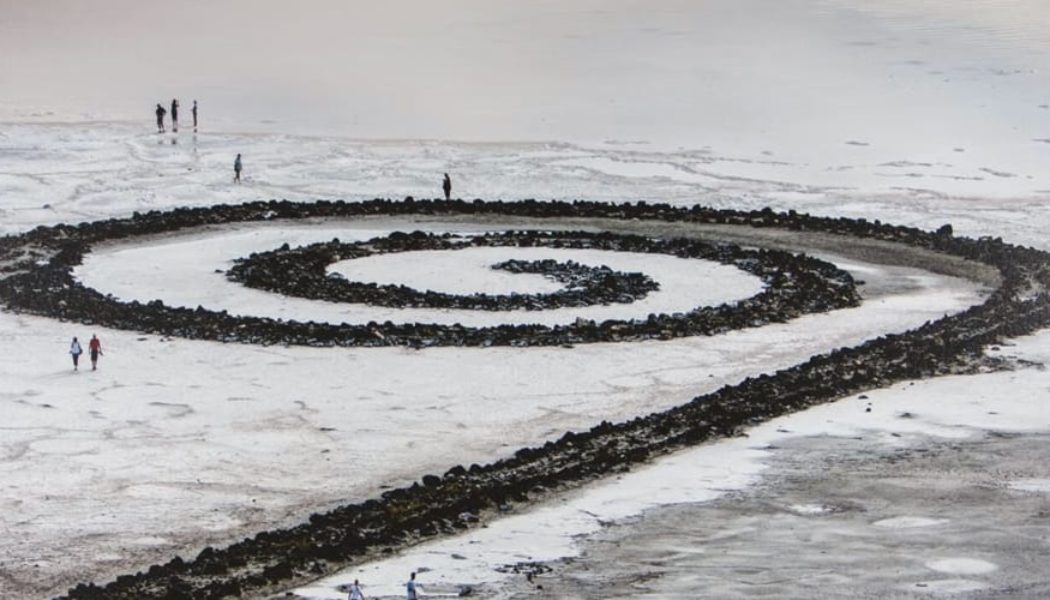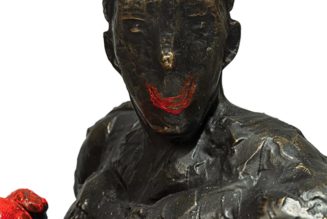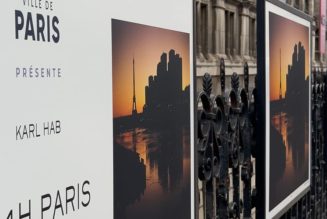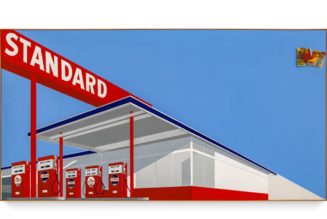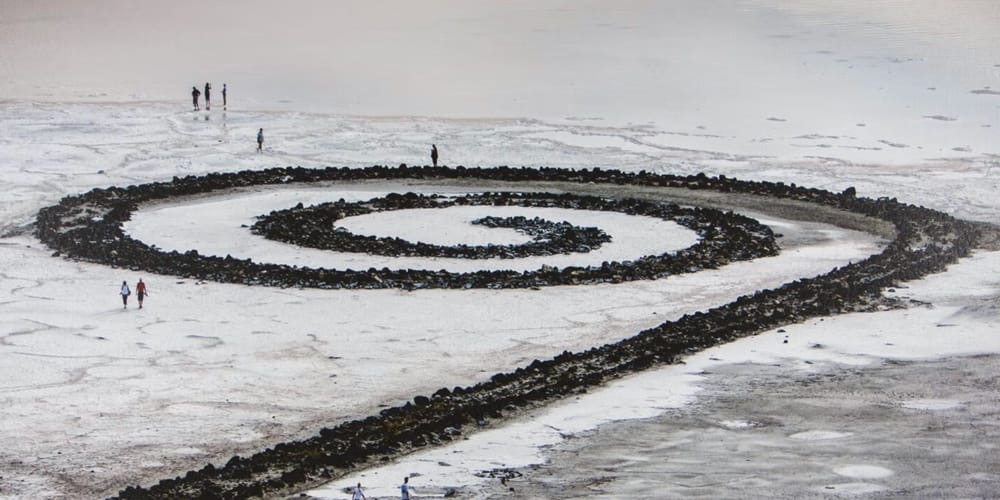
Robert Smithson’s iconic earthwork Spiral Jetty has been added to the National Park Service’s Register of Historic Places. Regarded as one of the most significant land art works in the world, the designation will aid the piece’s long-term preservation, underscoring its cultural and environmental importance.
The piece was constructed in 1970, just three years before Smithson’s death on the Rozel Point peninsula along the northeastern shore of Utah’s Great Salt Lake. Constructed using over 6,000 tons of black basalt rock and local earth, the 1,500-foot-long coil spirals counterclockwise from the shoreline into the water.
In its over five-decade history, the piece’s themes of entropy, permanence and the delicate interplay between human intervention and natural forces as remain as relevant as ever. The artist was captivated by the lake’s unique ecosystem — its mineral-rich waters, microbial pink tint and its inhospitable salinity. He envisioned the jetty evolving over time, with rising and receding water levels encrusting the structure with shimmering salt crystals. Though the spiral vanished beneath the water in 1972 only to reemerge in the early 2000s due to prolonged droughts tied to climate change.
In 1999, Smithson’s widow and land artist Nancy Holt donated the piece to the Dia Art Foundation where it is overseen in tandem with the Utah Museum of Fine Arts, the Great Salt Lake Institute and the Holt/Smithson Foundation, with support from Utah’s Division of Forestry, Fire and State Lands.
“In the 54 years that Spiral Jetty has existed, it has been both submerged by the Great Salt Lake and stood far from the lake front, bearing witness to the changing landscape around it,” said Dia director Jessica Morgan. “Beloved in Utah and far beyond, this artwork has come to mean many things to many people, and we are proud to continue our work caring and advocating for Spiral Jetty to preserve it for generations to come.”
